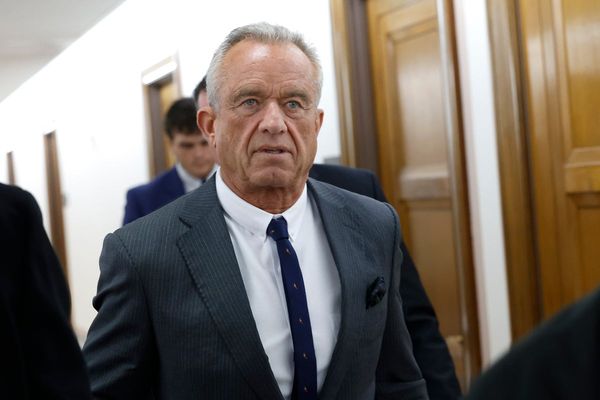
The bad news you probably already know. Mortgage costs are brutal at the moment, putting homeownership out of reach for millions of Americans. The pace of inflation is coming down but remains high, meaning consumer goods keep getting more expensive. Businesses are bracing for a recession. The economy is just weird right now, suffused with uncertainty and crossed with mixed signals.
Nevertheless, Americans have some positive short-term trends to celebrate, among them falling gas prices. Better still are three long-term trends that, despite their economy-transforming magnitude, have gone largely uncelebrated or even unnoticed. These trends promise a more dynamic economy not only in 2023 but also in the coming decades:
Inequality is easing
A decade ago, President Barack Obama called economic inequality “the defining challenge of our time,” arguing that “the next few years will determine whether or not our children will grow up in an America where opportunity is real.” At the time, data showed the middle class shrinking, average wages stagnating, and the wealthy eating up all the gains from economic growth. Rising inequality was paralyzing Washington and fraying the country’s politics. Yet around the time of Obama’s speech, inequality stopped rising. In the past three years, the country has become more equal, at least by some measures.
I don’t want to overstate things: Income and wealth are still distributed very unequally in the United States, much as they were in the Gilded Age. The haves are still trouncing the have-nots. The country’s level of inequality remains a threat to its political stability and long-term growth trajectory. Still, wage growth of late has been fastest for the poorest workers, David Autor of MIT and Arindrajit Dube and Annie McGrew of the University of Massachusetts at Amherst recently found—so much so that, the pandemic notwithstanding, the past few years have erased one-third of the growth in the wage gap between the highest- and lowest-paid workers over the past four decades.
The country’s wealth inequality has eased a little too, although the explanation isn’t entirely salutary. The value of assets held by the top 0.1 percent of the wealth distribution has dropped from $18.4 trillion to $16.9 trillion in the past three quarters; the holdings of the top 10 percent have fallen from $98.6 trillion to $92 trillion. (The bottom 50 percent, by the way, accounts for less than $5 trillion.) Rich people still own the bulk of the assets; those assets are just trading for less, thanks to the downturn in the stock market and in high-end real estate. A more encouraging sign in 2023 would be if wealth inequality declines because more middle-class and low-income families also get to own homes, stocks, and businesses.
We bent the cost curve in health care
Fourteen years ago, analysts at the Centers for Medicare and Medicaid Services thought that health spending would be roughly 22 percent of GDP in 2022. The real share was 18.3 percent. Government actuaries spent years overestimating the number of dollars Americans would spend in hospitals and doctor’s offices—a decade-plus ago, they thought we would be spending about $700 billion more on an annual basis than we are today—and the share of the economy devoted to health care. That is because the “cost curve” bent.
Nothing scared the green-eyeshade set like the cost curve projected in the aughts—a swoop showing Medicare spending, national health expenditures, or both growing faster than the economy itself did. Their projections, and thus their worries, were rooted in reality: The country’s health expenditures were swelling by tens of billions of dollars a year, and the country’s population was aging, meaning demand for health care would go up.
But for the past 15 years, health-care spending growth has been subdued, leaving aside the catastrophic early years of the pandemic. As a result, CMS anticipates that health spending as a share of GDP should be stable over the next decade at roughly 20 percent. And the CBO sees Medicare spending rising from 5.8 percent of GDP to just 6.8 percent of GDP 10 years from now—a reasonable amount, given the rising share of older Americans.
What happened? Any number of things. The Great Recession and slow recovery that followed dampened health spending for years. More employers started offering and more people signed up for high-deductible health plans, which come with significant out-of-pocket costs and discourage people from seeking care. The Affordable Care Act implemented a series of cost controls in Medicare. And pharmaceutical companies have conjured up fewer new, expensive drugs.
Of course, the country still spends an extraordinary amount on health care while having significantly lower life expectancies and worse health outcomes than its peers. And families are still struggling with crushing out-of-pocket costs. But in the long term, the bending of the cost curve promises higher wages for families and more room in the federal budget for other priorities.
We bounced back after the COVID recession
It took 76 months for the economy to recover every single job it shed in the Great Recession. It took 30 months for it to recover every job it lost during the pandemic. And in this most recent recession, the labor market gained back the majority of jobs it lost in less than a year—far faster than after the housing crash.
This is an extraordinary policy triumph. An unprecedented downturn hit, and the government—with loose monetary policy and trillions of dollars of stimulus spending—buoyed millions of families through it, unlike during the Great Recession. The economy has not lost any potential output due to the COVID recession, economists think. Long-term unemployment has barely grown. The government’s income supports made low-income families more than whole: Earnings among the poorest workers actually increased by 66 percent in 2020 because of boosted unemployment-insurance payments and stimulus checks; during each of the prior two recessions, the same group of Americans lost a quarter of its earnings.
Prior recessions left grievous scars. Many laid-off workers experienced worse health and permanently lower earnings trajectories; in some cases, their children’s educational and employment prospects were diminished too. Economists are now hopeful that the COVID downturn might not cause such permanent damage.
Each of these overlooked but hugely consequential trends means a more vibrant, productive economy today and in the future. The COVID stimulus program saved jobs, lives, and livelihoods while protecting the economy’s productive capacity. The moderation in inequality means less food insecurity and healthier kids growing up in low-income households. The bending of the cost curve frees up money for wage increases and gives the government space in the budget for investments in child care, social insurance, infrastructure, and everything else.
Yet each feels like just a beginning. An efficient and effective health system, the end of poverty, and lower inequality—these are things worth fighting for in the new year.







